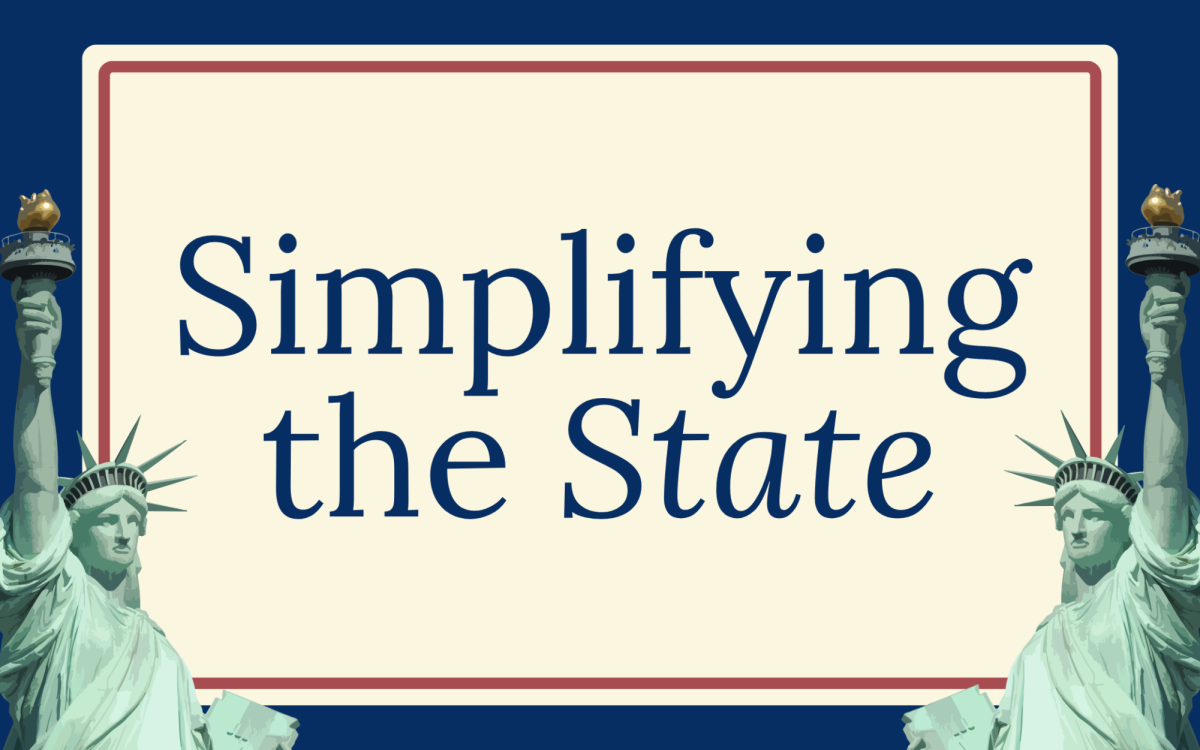This week, in this episode of “Simplifying the State,” we explore the latest polling data revealing new paths to 270 electoral votes for Trump and Harris and analyze how Biden’s exit reshapes the electoral map.
Adam (00:00.706):
Hello, welcome back to “Simplifying the State.” I’m Adam Watson.
Nicholas (00:04.676):
I’m Nicholas Perrin.
Adam (00:06.478):
On today’s episode, we’ll discuss the latest polling data, showing new paths to 270 electoral votes for both Trump and Harris and how Biden’s exit from the race has impacted the map. Before diving into the new polling, let’s review the situation before Biden dropped out.
Political experts and Biden’s campaign staff acknowledged that states like North Carolina, Georgia, Arizona, and Nevada were likely off the table due to poor polling. The most realistic path to 270 was through the Blue Wall: Pennsylvania, Michigan, and Wisconsin. Winning these, plus Nebraska’s second district, would have given him exactly 270 electoral votes. However, toward the end, states like New Mexico, Virginia, and New Hampshire—though not as reliably blue—started showing Trump closing the gap or even leading in some polls. This raised concerns that Biden’s campaign might need to invest in these traditionally blue states.
Since Biden’s withdrawal, there’s been a significant shift in the path to 270. Each campaign now has about 20 to 30 possible paths. Nicholas, what’s your take on this?
Nicholas (01:59.921):
Kamala Harris is much closer to Trump than Biden was. Before Biden dropped out, he was averaging less than a 5% lead over Trump. A few weeks after Harris entered the race, it’s become much closer, with Harris even leading in some polls.
Adam (02:48.933):
Since Biden’s exit, those advocating for his withdrawal have been vindicated. According to the latest 538 average, Harris is leading by about three points nationally. However, national polls are less critical than swing state polls. In the Blue Wall states—like Michigan and Wisconsin—Harris is leading by about three points. In the Sunbelt states, she’s ahead by about a point in Arizona, and by half a point in Nevada, while trailing by half a point in Georgia and close to tied in North Carolina. Nicholas, what’s your view on the potential for traditionally red states like Georgia and North Carolina to become swing states?
Nicholas (03:53.456):
It’s possible. Given the close polling numbers, a strategic campaign by Harris could shift Georgia and North Carolina into the swing state category.
Adam (04:14.604):
Harris and Walz are set for a two-day bus tour across Georgia starting tomorrow, the 29th, and will do their first sit-down interview with CNN. Let’s shift focus to Trump. Despite Harris leading in many battleground states, Trump still has a lead in Georgia and North Carolina. Trump recently received endorsements from RFK Jr., which might boost his position. He has an equal number of paths to 270 as Harris. Notably, most paths to 270 for both candidates rely on winning Pennsylvania and/or Georgia. Trump’s campaign has been emphasizing Pennsylvania, with a tour of Rust Belt states including Western Pennsylvania. What’s your take on Trump’s focus on this area?
Nicholas (06:15.195):
It seems unconventional to focus on rural areas, which are typically more conservative. Campaigning in urban centers might be more effective for Trump.
Adam (06:33.026):
That’s a good point. Rural areas tend to be more conservative, while urban centers generally lean blue. Trump might be aiming to solidify his base and sway undecided rural voters.
Switching gears to congressional races, Democrats might lose control of the Senate. With Joe Manchin stepping down from his Senate seat in West Virginia, they’ll lose their majority, reducing them to 50 seats. The Senate race in Montana, where a Democrat is currently serving, is highly contested. How do you think the Senate races could affect the 2024 election and presidential candidates?
Nicholas (08:30.075):
Losing control of the Senate would slow down legislative progress for the winning side. It’s crucial for both presidential campaigns to consider how Senate races might influence their strategy, though the outcome is uncertain.
Adam (09:08.3):
Another interesting development is in Texas and Florida. Trump’s lead in Florida is only about four points, and Republicans in both states are similarly close to their challengers. Florida and Texas, once considered safe red states, are now leaning toward purple. What are your thoughts on this shift?
Nicholas (10:17.699):
It’s intriguing. If Democrats can make inroads in Texas and Georgia, it would be a significant win, though I’m somewhat skeptical about achieving that.
Adam (10:36.408):
Indeed, the rural South remains a challenge for Democrats due to its conservative leanings. Thank you for listening to “Simplifying the State.” We’ll be back next week with a new episode. See you next time!






